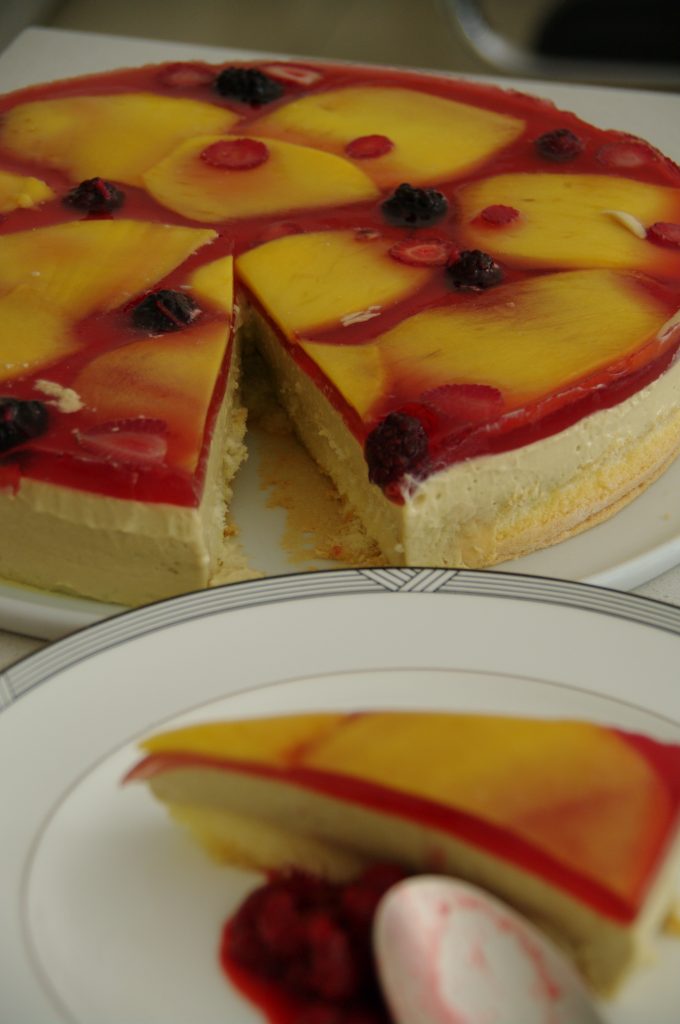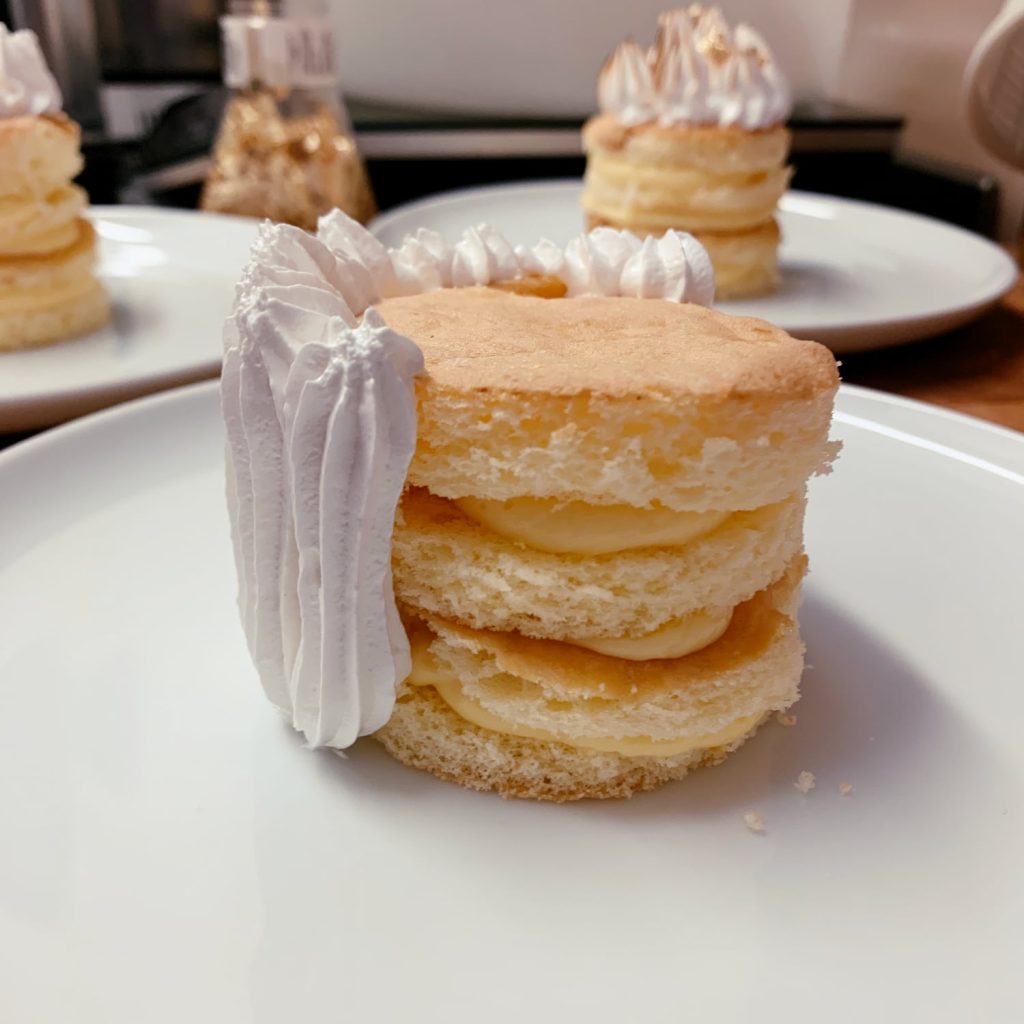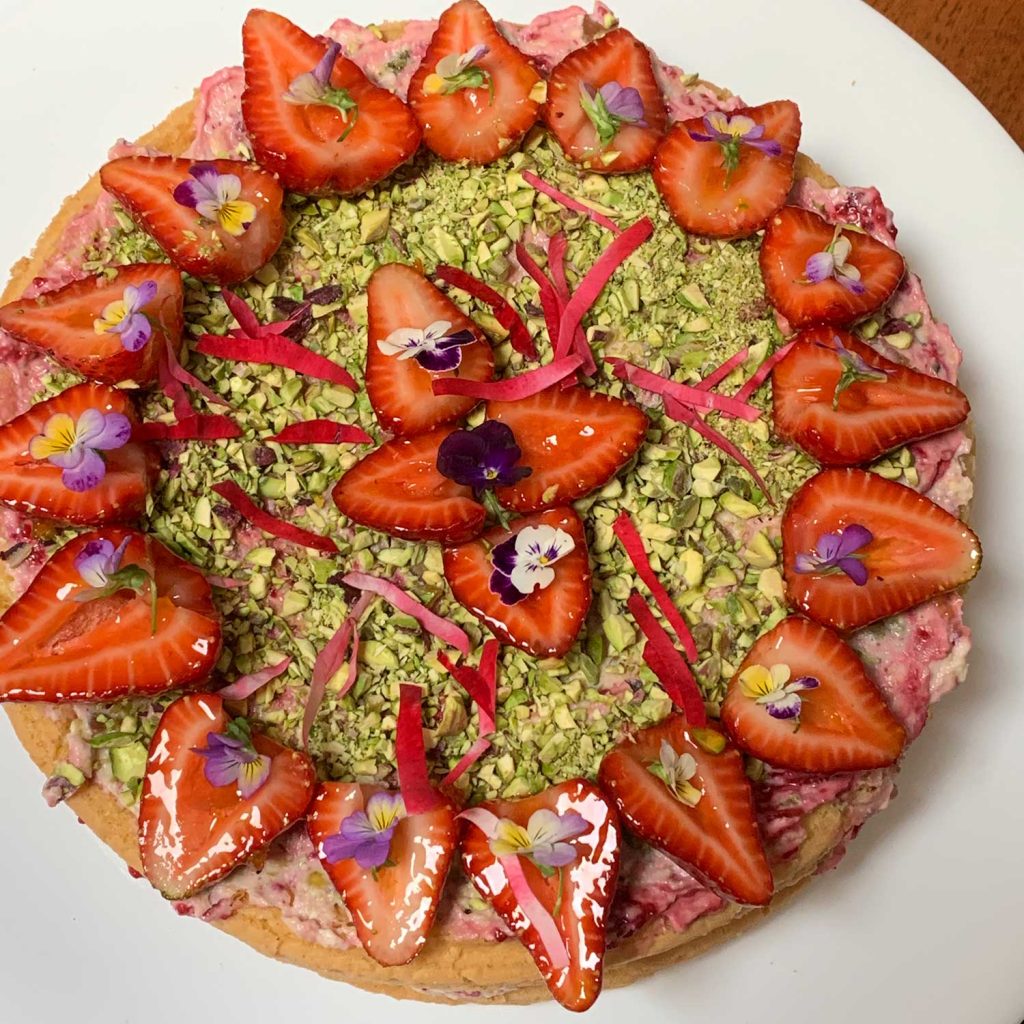

PAM FIELD’S SPONGE
Before I stepped from a drawing board to my restaurant kitchen, my boss’ had a PA called Pam Field and she was a wonderful cook. Pam grew up in country Australia where her family ran a bakery long before the vile pre-mixes became available and sadly ruined 90% of Australian bakeries. For the six months before I opened Mistress Augustine’s my colleagues where mercilessly experimented on, but Pam’s sponge always stole the show and no amount of wheedling could prize the recipe from her. On my last day Pam gave me an envelope which, when opened, contained her sponge recipe.
Since 81 I have made thousands of Pam Field’s sponges and taught hundreds of chefs and domestic cooks to make it. It’s a brilliant recipe and I am ever grateful for the recipe which still bears her name.
I WAS RECENTLY CONNECTED WITH PAM’S SON PETER VIA FACEBOOK AND DELIGHTED TO KNOW SHE IS STILL GOING WELL AND STILL LOVES COOKING
PICTURED LEFT MANGO BAVARIAN SPONGE RASPBERRY JELLY
AO 17 JANUARY 2024
many incarnations


Full recipe makes 2 x 28 cm round layers or 4 layers 25 cm x 38 cm
The recipe does not work in the same manner for less than a half recipe batch
to line the tins
30g very soft unsalted butter
2 tablespoons plain flour
for the sponge
9 x 61g or 8 x 68g, room temperature free range eggs
220g caster sugar
180g corn flour
50g bakers or cake flour (low gluten/soft)
10g cream of tartar and 5g bicarbonate of soda or 10g double action baking powder (available from Chinese grocers)
60g unsalted butter, melted but not hot
pre heat oven to 175°C
Tear off two pieces of baking parchment just slightly larger than the tins. Stack them on top of each other, invert one of the tins over the top and using a sharp knife cut two disks. Carefully and generously butter the tins and press a disk into the bottom of each tin. Butter the seam again, flour the tins and knock out the excess flour.
Put the eggs into the bowl of your electric mixer [we only have Kenwoods and the stainless steel bowl is best] and cover with very hot water. Set a timer for 5 minutes, which should be plenty of time to allow you to weigh out the ingredients. Put a fine sieve over a bowl, tare it on the scale and weight the flours and raising agents into the sieve.
Check out the videos below which will help you gauge when your eggs and sugar are just right.
Carefully remove the eggs from the water and dry the bowl and proceed without delay as the warmed bowl is an essential part of the technique. Crack the eggs into the bowl and whisk them for a couple of minutes, then add the sugar and whisk on high speed until it is thick and voluminous. In a Kenwood major bowl they will whisk to about 5cm from the top of the bowl. If you have a small Kenwood you will need to make 2 x 4 egg layers.
Sift the dry ingredients and fold them in by hand, then add the butter and fold through. Using a spatula mix thoroughly — care needs to be taken as the butter drops to the bottom of the bowl so it is important to check before you start pouring into the tins.
Cook for 15 to 20 minutes until they are golden and risen and just starting to shrink away from the sides of the tins. Run a knife around the edge and stand them on a cake rack to cool till they are barely warm and then turn them out of the tins onto racks covered with baking paper.
tip the most common cause of failure with cake baking is failure to pre-heat the oven. Most oven manuals will say 15-20 minutes but we have learned to allow 30 minutes… so basically the oven is turned on when you start getting everything together. The other most important thing to remember is that cooking is chemistry and cold eggs and sugar just do not combine.
ABOUT
We have 42 years history at the highest level
in the food and wine industry and the passion for our craft remains undiminished…
read more
ON cuisine-extreme
- People
- Kaaren Palmer Champagne
- Recipes
- News and Events
NEWSLETTER
to get the latest news, tips, and advice.